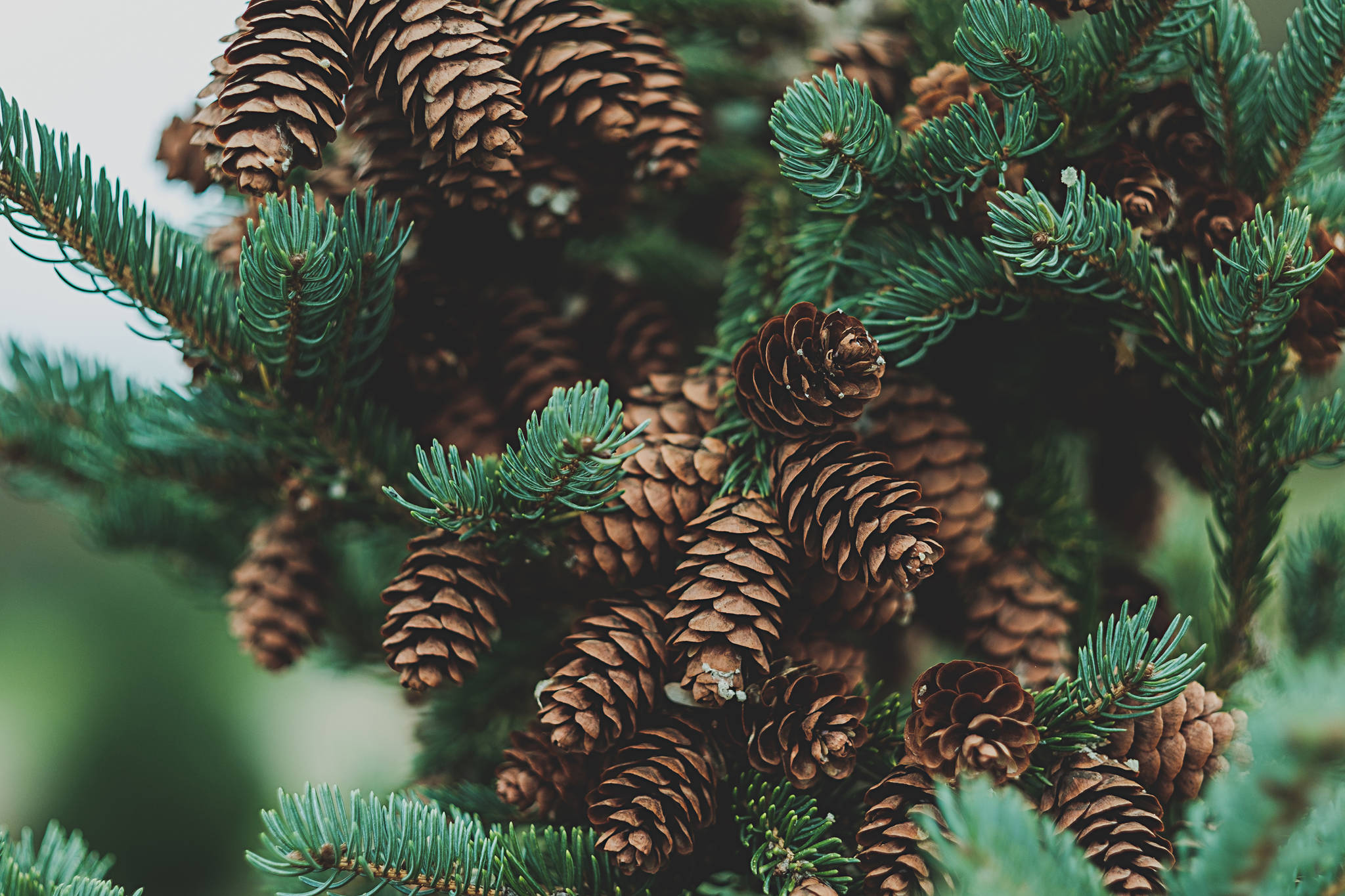On a nice winter day, a cluster of Parks and Rec hikers perched for lunch at the edge of a beautiful muskeg.
Someone observed that many of the shore pines were rather stunted and often crooked, while others grew straight and tall. Our local shore pines are a distinct subspecies of lodgepole pine, which grows mainly in the Interior; its straight, tall growth form gave the species its common name. Some of these Interior-type lodgepoles are reported from the north end of Lynn Canal.
The question, that day, was whether or not the tall specimens in our muskeg might be strays from up north.
Someone remembered that there are subtle differences between the subspecies in the orientation of the cones on the branches. But without a detailed genetic analysis, this notion probably cannot be ruled out — after all, these pines use the wind to disperse both pollen and seeds, and who’s to say that no genes from the upper Lynn Canal population have ever come to Juneau.
On the other hand, we observed that the tall, straight pines in our muskeg grew chiefly along the edges, near the surrounding spruce and hemlock forest. This distribution suggested to us that maybe the growth form is determined by habitat; for instance, muskeg edges tend to be dryer than the main part, and perhaps the acidity is somewhat less, too. A little research, back at home, revealed that expert plant ecologists have come to the same conclusion.
[Finding bright spots in the gray of Southeast]
That little discussion reminded me that pines are interesting in several ways. I have room to deal with one of them here.
About 40 species of pine occur in North America (out of over 100 worldwide). Most of these produce seeds with well-developed, flat wings; they are adapted for wind-dispersal when the cones open and shed the seeds. Just a few kinds lack wings altogether or have extremely small wings.
The best-known North American species with wingless seeds are the several closely-related species of pinyon pine. They grow on poor soils in dry areas of southwestern U.S. and Mexico. The seeds are large, over a centimeter long, and well-endowed with highly nutritious endosperm (about 60 percent fat) to fuel the growth of seedlings.
When the seeds are mature, the cones open but hold the seeds on the cone scales, not releasing them to just fall to the ground. This is considered to be an adaptation for seed dispersal by birds, principally pinyon jays and Clark’s nutcracker, although scrub jays and others also participate.
The birds harvest ripe seeds from the handily open cones and commonly cache them all over the landscape, sometimes may kilometers away from the parent tree. Many of the cached seeds are retrieved and eaten by these birds with excellent memories, but some are lost — and these can produce new trees for another generation.
Squirrels don’t miss these tasty bites, of course, but they are mainly seed predators. Any fallen seeds — and some cached ones — are scarfed up by rodents, quail and other ground foragers, including humans.
[Photos: Juneau Springs to Life]
Pinyon jays and Clark’s nutcrackers both have very strong bills, for hacking open closed, green cones early in the season, before the cones open. Both species have special anatomical adaptations for carrying loads of seeds to caches. The upper esophagus of the jays expands when it is packed with seeds; as many as 40 pine seeds can be carried at one time. Clark’s nutcracker has a pouch under the tongue where dozens of seeds can be carried.
Both of these birds eat other kinds of seeds too, as well as insects and other foods, but the relationship between the birds and the pinyons is considered to mutualistic — with benefits to both sides. Less specialized birds, such as scrub jays, participate in the mutualism, but the relationship is less specialized.
Two additional pine species (limber pine, southwestern white pine) in western North America make seeds with vanishingly small wings; their seeds also dispersed by caching birds. Seeds are released from the cones when mature and are available then to ground foragers. The seeds of the southwestern white pine are eagerly harvested and cached by Mexican jays, which cannot open green cones well and apparently eat more acorns than pine seeds.
One more North American species (whitebark pine) makes wingless seeds. But in this species the cones do not open readily. This species grows in montane forests of the western U.S. and British Columbia, where seed-harvesting birds and squirrels generally have to open the cones to extract the seeds.
The caches of these harvesters are regularly raided by black and grizzly bears. At least in some areas and some years, this food source contributes significantly to the survival and reproductive success of the bears.
Wingless pine seeds also occur in Eurasia, where winglessness seems to have evolved independently several times. The spotted nutcracker there participates in a mutualism similar to that in North America, but the Eurasian jay seems to be more closely associated with acorns and beechnuts (as is the blue jay of eastern North America).
Who else might participate in a mutualism with wingless-seeded pines in Eurasia?
Another question: What are the historical and ecological factors that determined the lack of wingless pine seeds in Southeast, where the seeds of all conifers are basically dispersed by wind?
• Mary F. Willson is a retired professor of ecology. “On The Trails” is a weekly column that appears every Friday. Her essays can be found online at onthetrailsjuneau.wordpress.com.

